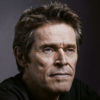Chris Burden — one of America’s most important and respected conceptual artists — died on May 10 at the age of 69. Burden rose to prominence in the art scene in the early ’70s with unsettling performance pieces, and his 2008 installation, “Urban Light,” has become a world-renowned symbol of Los Angeles. Here is an extended cut of Rico’s 2011 interview with Burden, centered on the artist’s slot-car extravaganza “Metropolis II.”

Rico Gagliano: Chris, welcome.
Chris Burden: Oh, thank you.
Rico Gagliano: And we are here in your studio looking at this thing, which is enormous. Can you kind of describe its dimensions and what it looks like?
Chris Burden: Yes, its footprint is 20 by 30 feet, approximately. It’s about ten feet high. It looks kind of like a jungle gym of steel tubing. And affixed to all these different levels are roadways, railroad tracks, and skyscrapers. When the sculpture is running, 1,100 Hot Wheel-type cars circulate through the whole system at a scale speed of 240 miles an hour.
Rico Gagliano: Is there a reason you picked 240 miles an hour by the way?
Chris Burden: No, it was just something we — we tried to make the cars go as fast as we could without having them fly off the roadways, which is wonderful. I look forward to traveling in my car at those speeds.
Rico Gagliano: I know. It sounds like the most fun thing you could do as an artist. It’s like, “Let’s see how fast we can get those little cars to go.” It’s something I’ve wanted to do since I was four.
Chris Burden: Yeah, but it’s also a model for the future, how fast we could go, if every car was satellite controlled and we all had a digital slot. We could effectively travel 10 times faster on surface streets.
Rico Gagliano: Do you want to see that happen?
Chris Burden: Oh, yes, I do. Absolutely. It would take all the stress of commuting away.
Rico Gagliano: Or make it incredibly stressful because things would be going so freaking fast.
Chris Burden: No, no. You would be in a private railroad car. You wouldn’t be allowed to accelerate, pass on blind corners, run stop signs. In fact, it wouldn’t even need to be traffic signals. The high speed traffic would weave itself, do you know what I’m saying? Every intersection would just be timed so no car would hit each other, but they could go through and just miss each other.
Rico Gagliano: It sounds wonderful. And also though, I can imagine an art critic saying, “That sounds really fascist.” It’s like, basically we’re not going to have control of our individual cars, we’re going to give somebody else the power to decide when and how these things go.
Chris Burden: Don’t forget your California handbook, “Driving is a privilege, not a right.”
Rico Gagliano: But this is not the first time you’ve dealt with vehicles. Early on in your career, you literally had yourself crucified on a Volkswagen. You have created a self-guiding, full-sized boat. What is your interest in returning again and again to vehicles and transportation?
Chris Burden: Well, I think sort of motion is the sailing feature of the industrial revolution and, by extension, the 20th and 21st century. So constant motion — think about how people travel now. A lot of my friends are almost constantly in travel mode. I’ve always sort of been interested in vehicles of all different kinds. Also interested too in how national character is somehow reflected in the nature of the machine that’s produced. So a German car is different than an Italian car. And why is that?
Rico Gagliano: And of course Los Angeles is defined by its car and you’re pretty much a lifelong California resident.
Chris Burden: Well, I didn’t grow up here. I started living here, I started going to college, Pomona college, so that’s when I first started living here.
Rico Gagliano: Many decades.
Chris Burden: Yeah, I’ve been here.
Rico Gagliano: The most important part.
Chris Burden: I’ve been here a long time. And I chose not to go back East too, and
I think the openness of California and the freeways had something to do with that because Boston, where I went to high school, it’s tight.Whereas here, you get on your motorcycle in college, and you can drive to New Mexico or up to the top of Mount Baldy… there’s a different feeling of possibility.
Rico Gagliano: Interestingly, there’s the idea of possibility you bring up. But also in a lot of these, the machine represented, the vehicle represented is not necessarily all positive. There’s kind of a scary side to being impaled on a Volkswagen obviously.
Chris Burden: Well it’s a big question about technology, I think, as to whether it rules us or we rule it.
Rico Gagliano: That reminds me of your piece, “The Big Wheel,” where you basically used a motorcycle to get a gigantic, and a very frighteningly powerful looking wheel, in motion.
Chris Burden: Well, it’s about how energy is converted I think. So, you have this little Italian motorcycle, and its back wheel is touching this big metal fly wheel that weighs three tons. As you accelerate through the gears, the flywheel is probably going 200 or 300 RPM, you realize the immense power of it. That if it got loose, if it popped out of its bearings — you know, I refer to it as a Neanderthal atomic bomb, because it was just — it would slice through buildings and buildings and buildings.
When I first showed it, I had this vision of it popping out and going through two or three buildings before it came to a stop.
Rico Gagliano: Did that give you a little bit of pleasure to consider?
Chris Burden: Well I think everybody considered, that’s why it’s both hypnotic and it’s repulsive at the same time. Because it’s scary, because it’s raw energy right there, and you’re imminently aware of it and yet it’s really hypnotic. I mean it’s…
Rico Gagliano: Kind of neat.
Chris Burden: Yeah, it’s nice to watch. It’s something very soothing about it too. So it has this funny duality I think.
Rico Gagliano: We have two questions that we ask everyone on the show. The first question is: if we were to meet you at a dinner party, what question should we not ask you?
Chris Burden: Well I’m not sure you shouldn’t ask me, but the thing, I think, the “Shoot” performance has been asked, “What’s it like to be shot?” And…
Rico Gagliano: For those who don’t know, in “Shoot” you were shot in the arm with a rifle in an art gallery. Does it surprise you that people wonder it? It’s a very powerful image.
Chris Burden: No, not at all. It’s a dragon that everybody subconsciously has dealt with. What is this thing of being shot, what is it? You see it depicted in the entertainment industry, over and over and over. So, what is this dragon? And I think it was a scientific and a philosophical position to face it head on.
Rico Gagliano: So I don’t feel too bad asking what was it like?
Chris Burden: It was like a Mac freightliner hitting you in the arm.
Rico Gagliano: Our second question is kind of the converse: tell us something we don’t know, either about yourself or the world that would surprise people at a dinner party.
Chris Burden:
Well, if I had another life to leave, I’d love to be evangelist, a preacher.
Rico Gagliano: A preacher?
Chris Burden: Yeah, a preacher. I think it’s a very lucrative field, and I think the overhead is really low too.
Rico Gagliano: I think you might have a hard time starting that career since you had yourself crucified on a Volkswagen earlier in your life.
Chris Burden: Oh, I don’t know. I think if I chose to I could, but…
Rico Gagliano: Why don’t you, what’s keeping you then?
Chris Burden: I’m an artist.


